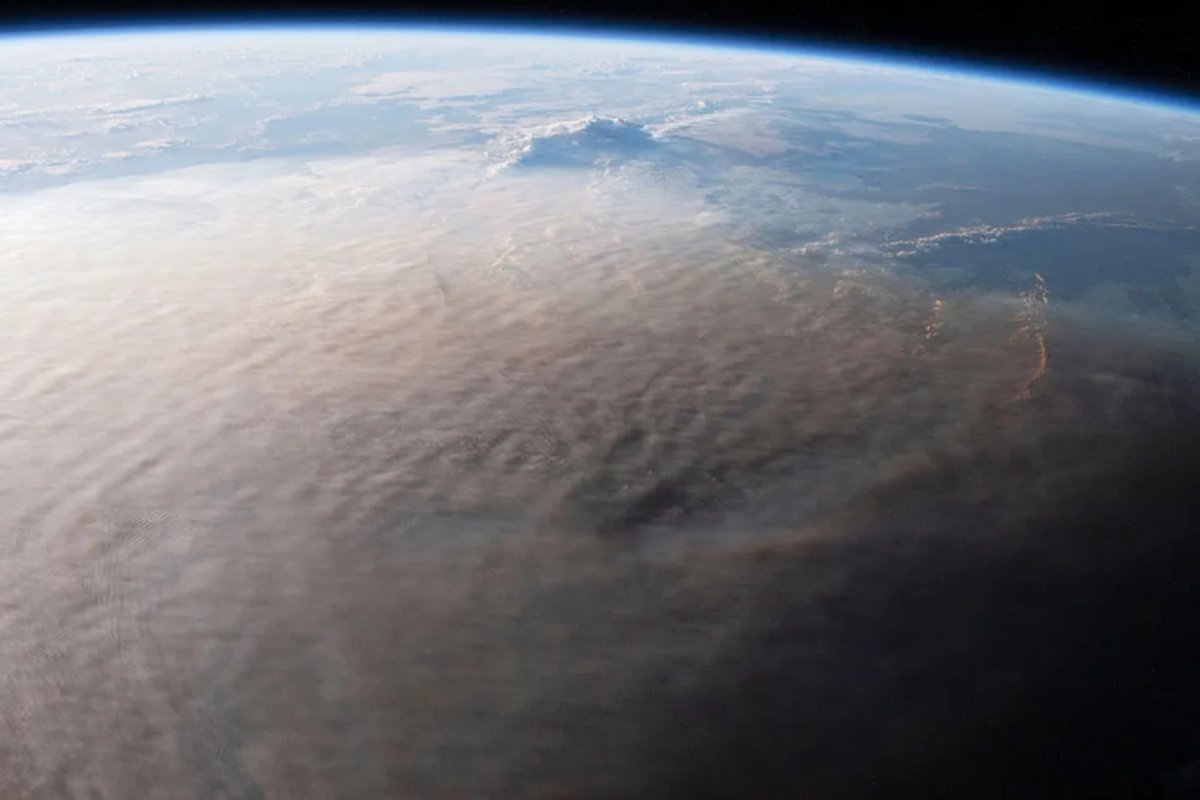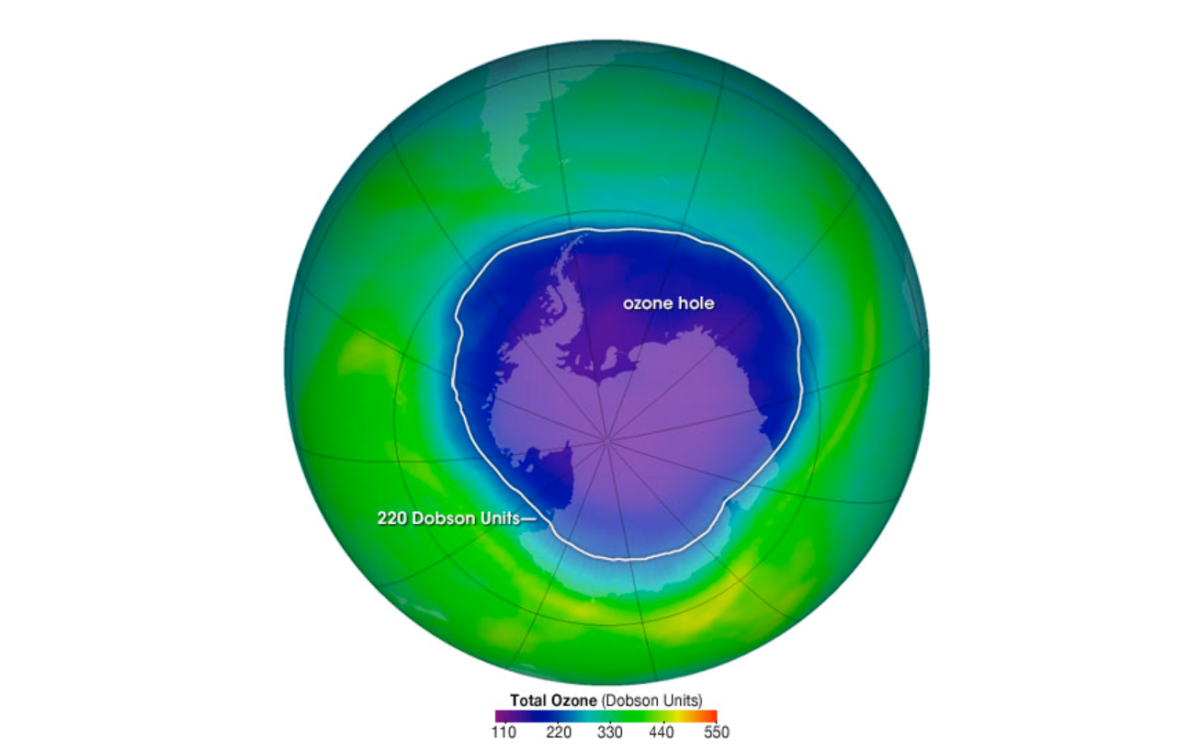The 2022 eruption of the Hunga-Tonga Hunga-Haapai volcano tore a chunk out of the Earth's ozone layer due to the huge volumes of water vapor it poured into the atmosphere, according to a new study published in the journal Science.
Situated on an island in Tonga, the volcano erupted on January 15 of that year, releasing 100,000 times more energy than the Hiroshima nuclear bomb in its huge explosion and matching Mount St. Helens' power.
The eruption depleted the ozone layer by up to 5 percent in some regions within a single week of the event.

This was as a result of the enormous volumes of water pumped into the atmosphere from the eruption—alongside black ash, hydrochloric acid (HCl) and sulfur dioxide—forming plumes of vapor towering up to 34 miles high.
"Usually there are roughly four million water molecules per million in the stratosphere, and the volcanic plume contained up to 300," Olaf Morgenstern, a principal atmosphere and climate scientist at New Zealand's National Institute of Water and Atmospherics (NIWA), said in a statement.
This vapor reacted with a number of other chemicals shot out of the volcano, resulting in the breaking down of O3 ozone in the atmosphere above the tropical southwestern Pacific and Indian Ocean regions.
"Major volcanic eruptions can inject gases and particles into the stratosphere (approximately 15-50 km [9.3 miles to 31 miles] above Earth's surface) where the protective ozone layer resides. It is fairly common to see short-term ozone losses following a major eruption as a result of reactions involving volcanic aerosol and chlorine," Laura Revell, an associate professor of physical and chemical sciences at the University of Canterbury in New Zealand, said in the statement.
The authors of the study described in the paper how they launched balloons from Réunion Island in the Indian Ocean into the volcanic plume, five days after the eruptions, in order to measure the chemical reactions occurring as it floated away into the atmosphere.
They found that the significant increase in water vapor and aerosol surface area was accompanied by substantial ozone depletion, at a rate of 0.07ppmv/day [parts per million volume per day]. They also reduced concentrations of HCl and increased ClO, indicating that the chlorine was reacting with O3 ozone, eroding the O3 levels in the atmosphere.

"The Hunga Tonga-Hunga Ha'apai eruption was surprising because, as has been reported before, it injected such large quantities of water vapor into the stratosphere (10 percent of the amount of stratospheric water vapor prior to the eruption)" Revell said. "The measurements made in this study show that the stratospheric cooling from the water vapor helped the ozone loss processes involving volcanic aerosol to become more efficient. Ozone decreased rapidly by 5 percent in just one week over the tropical south-western Pacific and Indian Ocean. This is a significant amount, but not as large as the Antarctic ozone hole, where around 60 percent of the ozone layer is depleted between September and November each year."
The disruption to the ozone over the tropics was unusual, as this area is usually very invariable in ozone thickness.
"The speed of the observed ozone depletion challenges our understanding of the chemistry occurring on the surfaces of these particles and droplets. Also any potential role for halogen in the plume (where halogens are constituents of sea salt which was possible injected into the stratosphere) remains to be further investigated," Morgenstern explained.

The scientists expected that the volcanic plume would drift over the Antarctic, further thinning the hole over the southern pole of the planet. However, observations of the Antarctic ozone hole have shown that it remained unchanged by the volcano.
"As a result of these observations, the scientific community has been expecting some unusual polar ozone depletion to happen after the volcanic material reached the Antarctic. It did not affect the 2022 ozone hole season because the material did not make it to the pole in time. The 2023 ozone hole season, contrary to expectations, has not been unusual. The reasons for nature not playing ball I'm sure will be explored," Morgenstern said.
The authors hope to use these findings to further study how natural disasters might impact the atmosphere, and therefore, climate change.
"Beyond its volcanic relevance, our research offers crucial insights into atmospheric chemistry and its implications for climate change," the authors wrote in the paper. "The comprehensive observational evidence that we present substantially advances our understanding of rapid O3 depletion in certain volcanic plumes. Our study also provides new perspectives on the effects of volcanic eruptions on stratospheric composition and informs future studies and early-response strategies to assess their aftermath."
Do you have a science story to share with Newsweek? Do you have a question about volcanoes? Let us know via science@newsweek.com.





